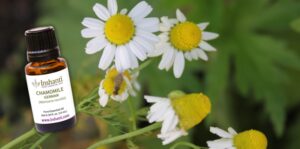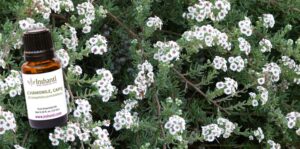
While spring may have “sprung” in March, for many folks, April is the time when spring is at its most beautiful – warmer temperatures are steady and the landscape is populated with gorgeous blooms of the first flowers.
If you happen to be someone with more than a passing interest in flowers, you may have wondered – how are flowers classified? Knowing this, you would also be able to answer the question: how are essential oils classified?
The first thing to understand is that just like us, plants belong to families sharing similar ancestry, history and characteristics. Similar to how family trees have “branches,” broader classifications of plant families “branch” into more specialized groupings known as genus, or in the plural form, genera. Then, each “branch” of genus also includes individual species of plants. For example, according to Theplantlist.org, the Rosaceae, or rose family, contains 2,500 species grouped within more than 90 genera. This is extremely useful for understanding how different essential oils may come from plants from the same genus but different species, resulting in both shared and distinct therapeutic benefits. When starting to select oils, it is helpful to remember that a botanical name has two parts: the first word is the genus and the second word is the species.

A great example is the different Chamomile oils, German, Cape, and Roman, crafted from different species of chamomile plants, all belonging to the same genus. A herbaceous annual plant native to southern and western Europe as well as northern and western Asia, the German Chamomile plant is a hardy, bushy shrub. Also known as “blue chamomile” due to its deep, inky-blue color, German chamomile is one of the most potent anti- inflammatory essential oils known for its calming properties. To harness its calming power, drop 10-15 drops into a blank inhaler and inhale to release nervous tension and relax. Thanks to its pain-relieving and anti-inflammatory properties, German Chamomile is also excellent in blends crafted to relieve arthritis and swollen muscles, joints and tendons.

By contrast, Roman Chamomile is a perennial that only gets about a foot high and tends to grow along the ground. Like German Chamomile, Roman chamomile essential oil is also celebrated for its anti-inflammatory properties and pain-relieving properties, making it a great oil for an anti-inflammatory blend for relief from pain, migraines, and PMS symptoms. However, this gentle oil has even greater versatility. Mild enough for use with babies, Roman chamomile oil can be used as a calming addition to a baby’s bath, as a way to relieve the pain of teething, or in blends to ease the discomfort of diaper rash, colic, and other digestive issues. Or, diffuse Roman Chamomile to bring a calming atmosphere to the entire house.

Finally, a native of South Africa, Cape Chamomile has similar calming properties as German and Roman Chamomile, but essential oil from this fragrant, fruity-smelling plant distinguishes itself for its therapeutic benefits supporting healthy skin and wound care. Often used in perfumes because of its berry-like aroma, Cape Chamomile is also used extensively to calm boils, eczema, and even the itch from mosquito bites. As a bonus – Cape Chamomile is our Ship-n-Sniff feature of the month! Try some with every order.
At Inshanti, we love educating our clients on the benefits of essential oils – from all species and all genera! This April, feel free to stop by, or contact us directly, and let us help you maximize the power of plants.

